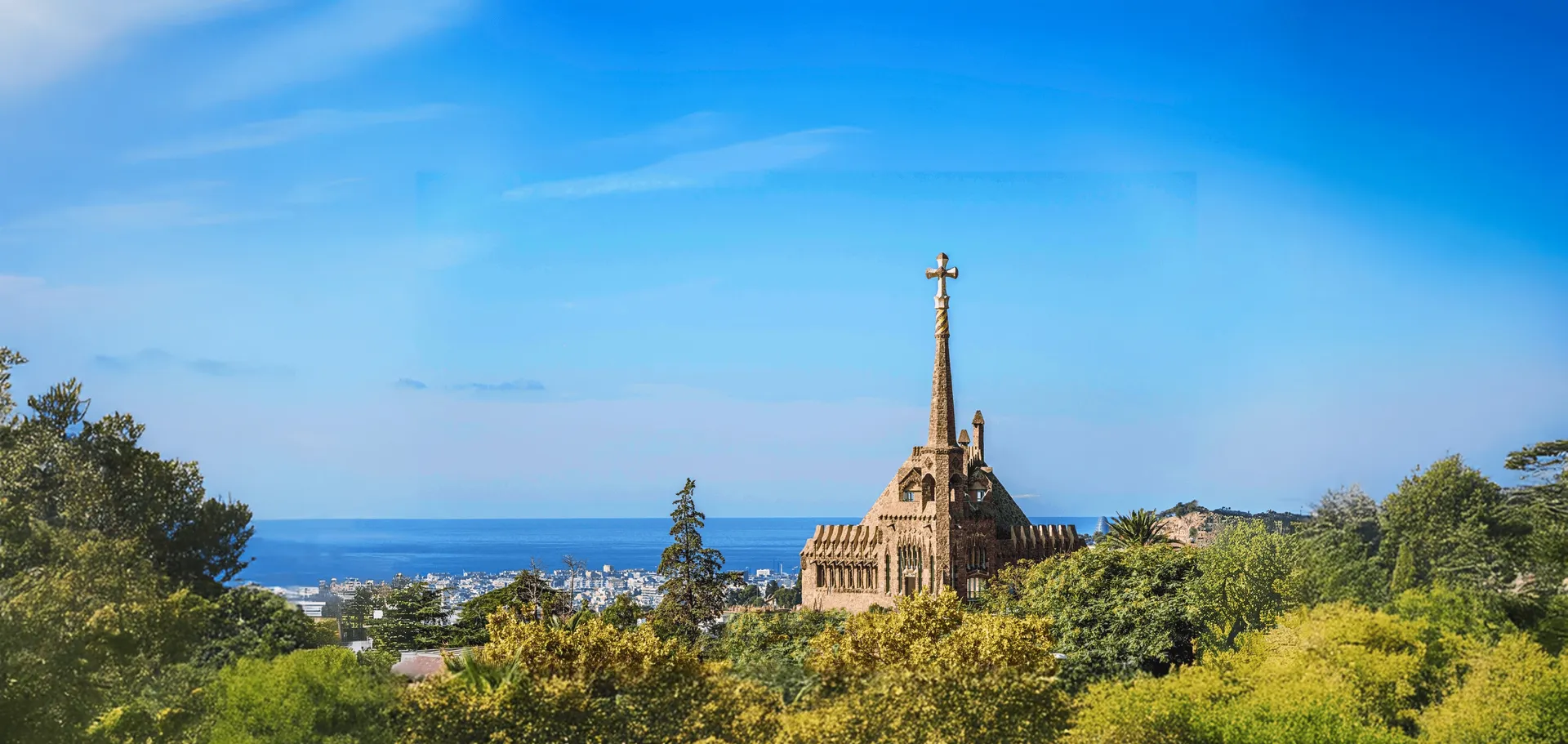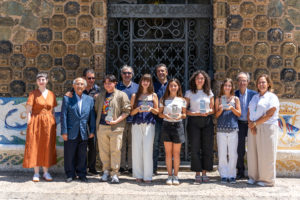March 13, 2025
By Ferran Garcés

The end of the Casal de Barcelona is usually placed in 1410, with the death of King Martin I the Humane, who had no heir. This statement is true if we only consider the male members of the lineage. However, after the king’s funeral, two female members were still alive. These were the two queens who lived at Bellesguard. Today, we will talk about them and their fight for this palace.
Margarida de Prades (1387-1429)
Owner: 1410-1422
Over time, the representation of medieval queens has evolved, from the paradigm of passive women to a more active perception, full of nuances. The most paradigmatic example of this change is the woman with whom this list begins. In the historiography of her time, Margarida’s figure was reduced to a secondary role, as the wife who could not give King Martin an heir. In reality, references to her often focus on gossip about sexual remedies used to enable the royal couple to have a child (1).
From the Renaixença, during Gaudí’s time, Margarida took on a romantic image as a muse for poets (2), both in her time and in Gaudí’s era. Among others, Jacint Verdaguer, a friend of the architect, dedicated a poem to her in which he uses the queen’s name, saying that among all the flowers in the Bellesguard garden, King Martin’s heart has stolen a daisy.
Recent studies have expanded Margarida’s personality. Today she is considered “a queen who, from her position of vulnerability and suffocated by economic problems, did not give up but instead showed a rebellious and belligerent attitude, using the scarce resources she had to move forward” (3). On the other hand, Margarida proved she could have children. She did so with Juan de Vilaragut, an act that today is interpreted as proof that she never adopted a passive or submissive attitude (see: a secret love).
Now, a bit of chronological context. Margarida de Prades entered the Bellesguard palace through the main door, as she came to marry King Martin in 1409. Consequently, it seems likely that she was to be the next resident of her husband’s palace.
In practice, however, the Casal de Barcelona was ruined, and due to the incessant debts accumulated, Margarida lost both Bellesguard and the rest of her inheritance as the widow of King Martin (see: “The Queen’s Letter Who Lost Her Palace”). In 1422, due to a breach of a loan she took from her sister-in-law, Violant de Bar, Margarida finally relinquished Bellesguard (4)—a sister-in-law who had long coveted the palace…
More information: The Voices of Bellesguard
Violant de Bar (1364-1431)
Resident: 1410-1431
Few figures are as difficult to summarize as the one we are about to discuss. Violant de Bar was the second wife of John I the Hunter, the brother of Martin I the Humane. On one hand, history describes her as a cultured queen, active in the governance of the kingdom. In fact, it is believed that she was the one who truly held the reins of the state. Related to the royal house of France (Valois dynasty), she received a refined education, mingling with the best artists and literati of the Parisian court. Once in Barcelona, she turned the city into another cultural center that promoted Catalan literature and language. The “Jocs Florals,” the “backbone” of the Catalan Renaixença, were established in Catalonia thanks to her (5).
On the other hand, Violant de Bar has been described as a lover of luxury, like her husband, known as “The Lover of Gentility” and, at the same time, “The Careless.” Both are believed to have been responsible for the administrative and financial disorder during their reign. As if that weren’t enough, Violant de Bar also became known as an ambitious person, involved in all the intrigues of the time, starting with her mother-in-law, Sibylle de Fortià. Her conflict inspired the play Battle of Queens by Frederic Soler (Pitarra) in 1887. She later had other confrontations with King Martin and his first wife, Maria de Luna. Josep M. Vall Comaposada, Bellesguard’s first biographer, summarizes it this way: “It is paradoxical that Violant de Bar, who, upon the death of her husband John I, falsely claimed to be expecting a posthumous child from the late king in an attempt to scorn the throne from Martin, died in the residence dreamed of by him (referring to Bellesguard), while he died in a cell of the Valldonzella Monastery” (6).
It is even more paradoxical that, once King Martin was buried, and despite Margarida de Prades residing in the palace, Queen Violant managed to settle at Bellesguard and, from there, sent official letters and carried out other political affairs. Once again, we quote Josep M. Vall Comaposada: “Why did she leave Bellesguard? Francesca Vendrell gives us a possible answer: Violant de Bar’s constant presence. Through several letters dated between October 1410 and January 1411, we know that Violant was settled in the tower and was dispatching letters in favor of her grandson Luis, who was then a contender for the Crown” (7).
During the Compromise of Caspe, Violant, by favoring her grandson, confronted the winning pretender, Ferdinand of Antequera. Nevertheless, the experienced queen survived, once again, her enemies. In the end, while Martin the Humane had lived only one year at Bellesguard, from 1409 to 1410, and Margarida de Prades only about two years, until 1412, Violant, on the other hand, lived there until her death in 1431. However, to achieve this, she relied on unexpected support. We will reveal that next week…
More information: The Voices of Bellesguard
Notes
(1) Duran i Cañameras, Fèlix (1953), “Margarida de Prades (II. Les noces)”, Butlletí de la Societat Catalana d’Estudis Històrics, pp. 43-46. See online: here.
(2) Fort i Cogul, Eufemià (1998, 2nd ed.), Margarida de Prades, Rafael Dalmau, Barcelona, pp. 52-58
(3) Martin Lloris, C., Gómez-Ferrer Lozano, G., (2023), “Margarida de Prades and the Dispute over the Ownership of the Royal Relics,” Locvs Amoenus, 21, Universidad Católica de Valencia San Vicente Mártir, p. 25
(4) Detailed explanation of how Violant settled permanently at Bellesguard: Vall i Comaposada, Josep M. (2014), Bellesguard. From the Residence of Martin the Humane to Gaudí’s Tower, Duxelem, Barcelona, pp. 76-77
(5) Hughes, Robert (1992), Barcelona, Anagrama, Barcelona, pp. 390-391
(6) Vall i Comaposada, Josep M. Op. Cit., p. 77
(7) Ibíd., p. 75.




